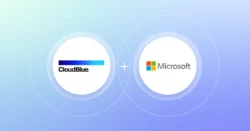
THE MONETIZATION PLATFORM
Everything you need to win in the subscription economy.
INTEGRATIONS
Join the world’s leading brands who monetize with CloudBlue. Explore our flexible pricing plans.
Error processing the submission, please try again.
Everything you need to win in the subscription economy.

Everything you need to win in the subscription economy.

Journey into multi-tier marketplaces, subscription & billing management, and cloud expansion with CloudBlue’s ebooks, white papers, infographics, and more.

Subscribe and stay updated
on the latest at CloudBlue.
THE MONETIZATION PLATFORM
INTEGRATIONS
SERVICES
BY OBJECTIVE
BY INDUSTRY
BY USE CASE
SUCCESS STORIES
SUPPORT
PARTNER TYPES
PARTNER MODELS
JOIN OUR NETWORK
RESOURCE CENTER
ESSENTIAL REFERENCES